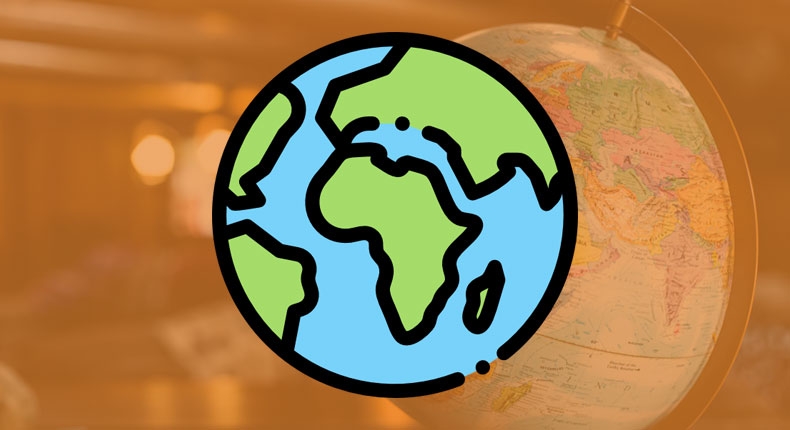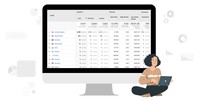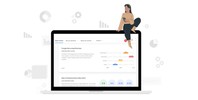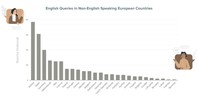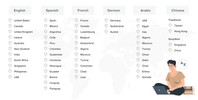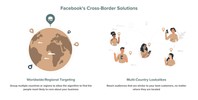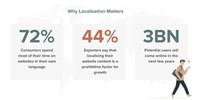In today’s connected world, anyone can be a multinational, from a small start-up to a FTSE 100 behemoth.
While tapping into different markets around the globe was once seen as reserved for those with huge cash flows and local offices on every continent, in the age of the internet, selling to international customers has become easier than ever. This is in part thanks to the ability to effectively market your product or service through Google, Facebook and other marketplaces and social platforms.
Nowadays, whether you are a Manchester PPC agency or Coca-Cola, you can make use of the same tools to sell your product worldwide.
There are many reasons to look beyond the borders of your own country. You may be reaching peak market saturation, you may sense that your product or service has a global appeal, you may be looking for efficiencies or economies of scale, or simply to diversify risks.
The latter has come into play more and more lately, as the threats or restrictions of COVID-19 force businesses to look for other potential income streams from abroad. Whatever your reason for international expansion, there has never been a better time to start.
But how can you actually use paid media to get off the ground?
At Clickoo, we’ve specialised in creating localised ad campaigns across 20+ territories for over 10 years. But if this is your first foray into the global market, where should you begin and how can you test the waters on a modest budget?
Read on to find some practical tips on identifying new markets and setting up international PPC campaigns.
Identifying New Markets
One of the first and simplest ways to identify new target markets is to check where your existing traffic is coming from in Google Analytics by going to Audience > Geo > Location. You may be surprised to see traffic from countries you’ve never actively targeted, but these can give you an indication of demand and some easy entry points.
In the example below, you can see a UK site bringing in traffic from other countries with a high proficiency in English, and has even made a sale from Ireland despite having no paid media activity in this country.
Another useful (free) tool to give you an indication of potential new markets or find out more about the ones you’ve identified in Google Analytics is Google Market Finder.
Here you can input your website or app and select the relevant categories to see a list of suggested markets and insights. By doing this, you can compare and contrast to get an idea of where might work for you based on your requirements, whether that is high demand, low CPCs, languages spoken etc.
Of course, there are far more insights out there. If you are making a serious investment into localised paid media, we would recommend at the very least a PESTLE analysis and ideally a full market, audience and digital insights review. However, using the free Google tools is a great way to make a start in testing the waters.
Campaign Creation On Google
Let’s begin with Google Ads. We all know that Google is encouraging the use of automation more and more these days, and we’re having to put our faith in their (admittedly often vague) machine learning systems.
However, making use of their AI can be an excellent way to broaden the reach of your campaigns and introduce other markets with minimal effort.
If your primary market is the UK, Google recommends creating campaigns for the rest of Europe with English ad copies and keywords. By nature, Google will target people who use your chosen language.
However, many users speak more than one language, and by grouping smaller countries together, you can generate more data to optimise than if you were to target them individually.
Newer markets should also be able to benefit from existing account data so you can find similar customers to in your original market.
Here’s a non-exhaustive list of same-language countries from Google to get you started:
What marketers often forget is that similar to Search, Google Shopping can benefit from a broader targeting strategy.
You can choose to upload English language product feeds and target countries where English proficiency is high, such as the Netherlands, Sweden and Germany. Your Shopping ads will also appear for people searching in English throughout these locations.
Bear in mind that the currency of your shopping feed has to match the country of sale. But if your website doesn’t yet offer the local currency for a country, you can use the Google currency conversion feature.
This can result in a higher click-through rate but lower conversion on-site, as customers may be less likely to make a purchase in their non-native currency.
If you have the budget to be able to translate some ad copy and keywords, we’d recommend starting out with your top three best performing campaigns.
Ideally, you should try to localise at least one landing page and a form submission or checkout page (depending on your conversion goals) to increase the likelihood of conversions and get more accurate results. The more data, the better to help you decide where to take your campaigns next.
Campaign Creation On Facebook
Facebook and Instagram now have over 2.3 billion users and 1 billion users worldwide, so these platforms are a great place to start testing your new international target markets.
Similar to Google, Facebook recommends consolidating your first new target markets into a simple campaign structure, grouping by points of similarity such as geographic proximity, language, size of market and similar consumer trends.
By adopting this approach, it maximises the data that the algorithm has available to learn from, ultimately driving efficiencies and improving campaign performance.
If this sounds scary, try running some A/B tests with campaigns for individual markets vs the combined approach and assess how each strategy performs. As Facebook estimates on average, the latter can lower CPA by up to 10% and CPIC up to 20%.
We’d also suggest making use of lookalike audiences to reach users in new markets that are similar to your most valuable customers in your existing markets.
Despite the location being different, Facebook will look to use existing data to create an audience of users with similar attributes to your most valuable customers that reside within your new target markets. This instantly gives you immediate access to an incredibly valuable and relevant audience.
What Should You Localise Next?
Hopefully, after your campaigns have been running for a few weeks or months, you’ll start to notice some positive signs among some of your new target markets.
KPIs will vary business to business, but we generally assess metrics like sessions, time on site, bounce rate and conversion rate. Don’t be discouraged if your CVR is low to begin with, this is normal, and it takes time to build brand awareness and confidence.
It’s important to note that the customer journey and time to conversion could vary across different countries, even if you are targeting similar audiences.
To take your international expansion to the next level, identify a few core markets and go beyond simply hiring a translator to replicate your UK ad copy. We recommend localising your paid media strategy itself, from creative messaging to channel selection to budget phasing, based around a wide range of market and audience insights.
As well as tailoring your marketing approach to each country, don’t forget about the localisation process beyond paid media. By localising every aspect, from website content and CX to payment and delivery methods, you can make your offering resonate clearly with your target audience.
When you consider that only 20% of the world’s population speaks English, it’s evident that by not investing in a localised customer experience, you could be missing out on huge opportunities for your business.
